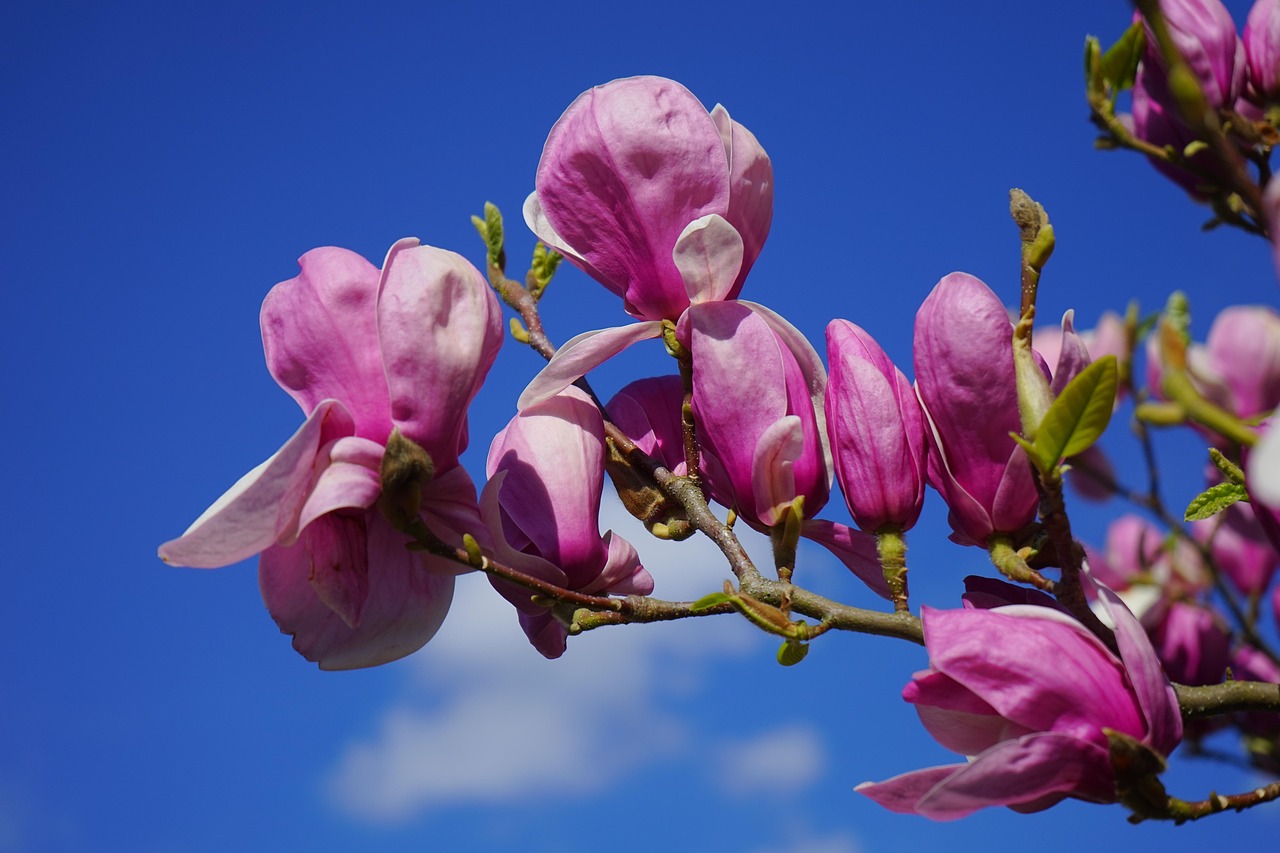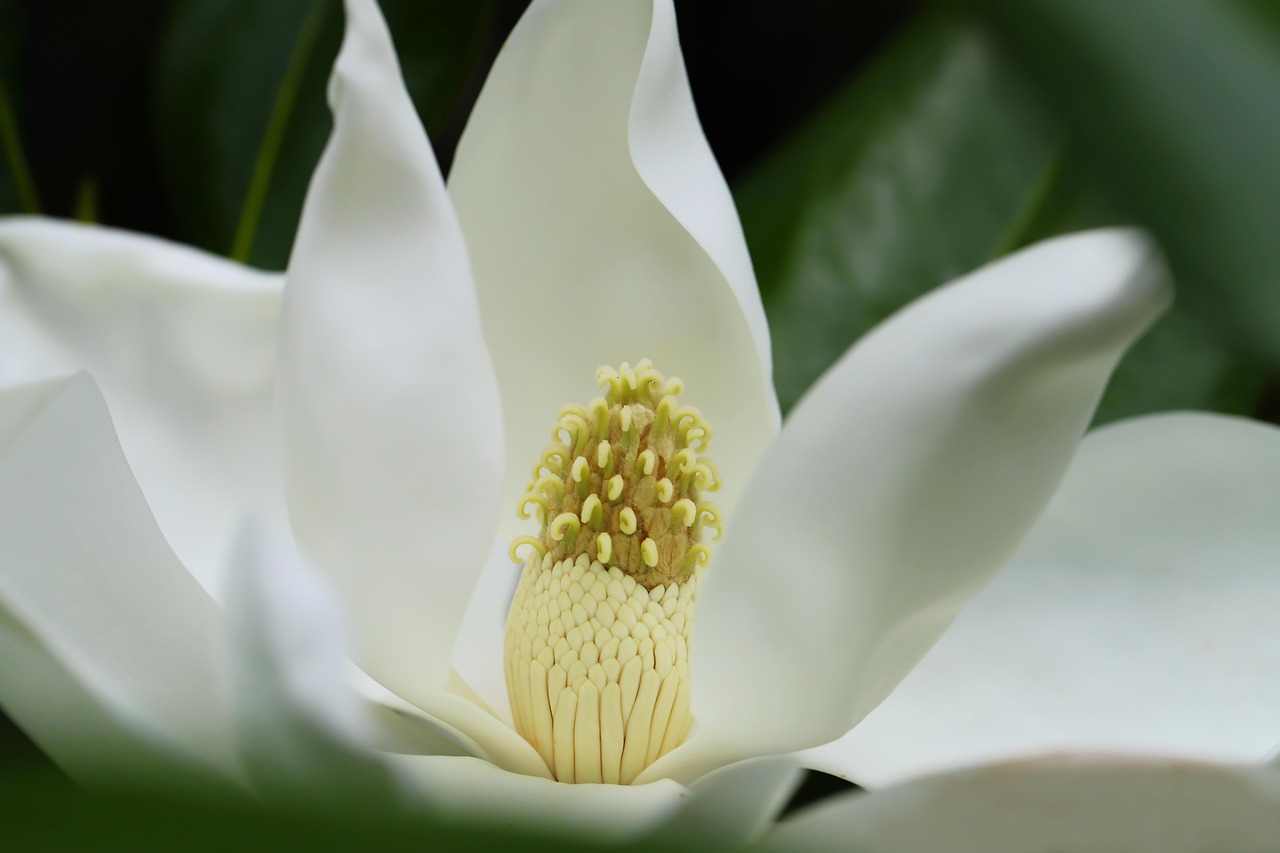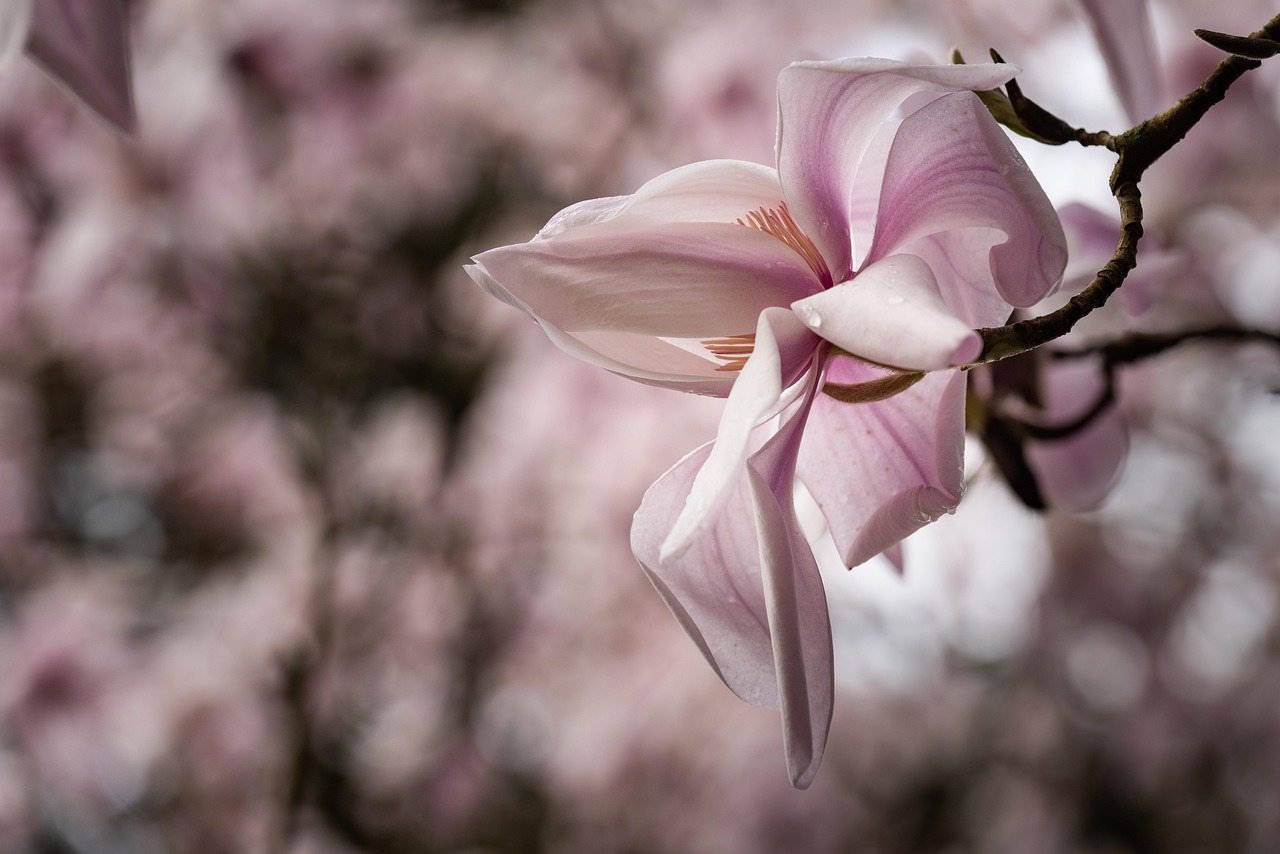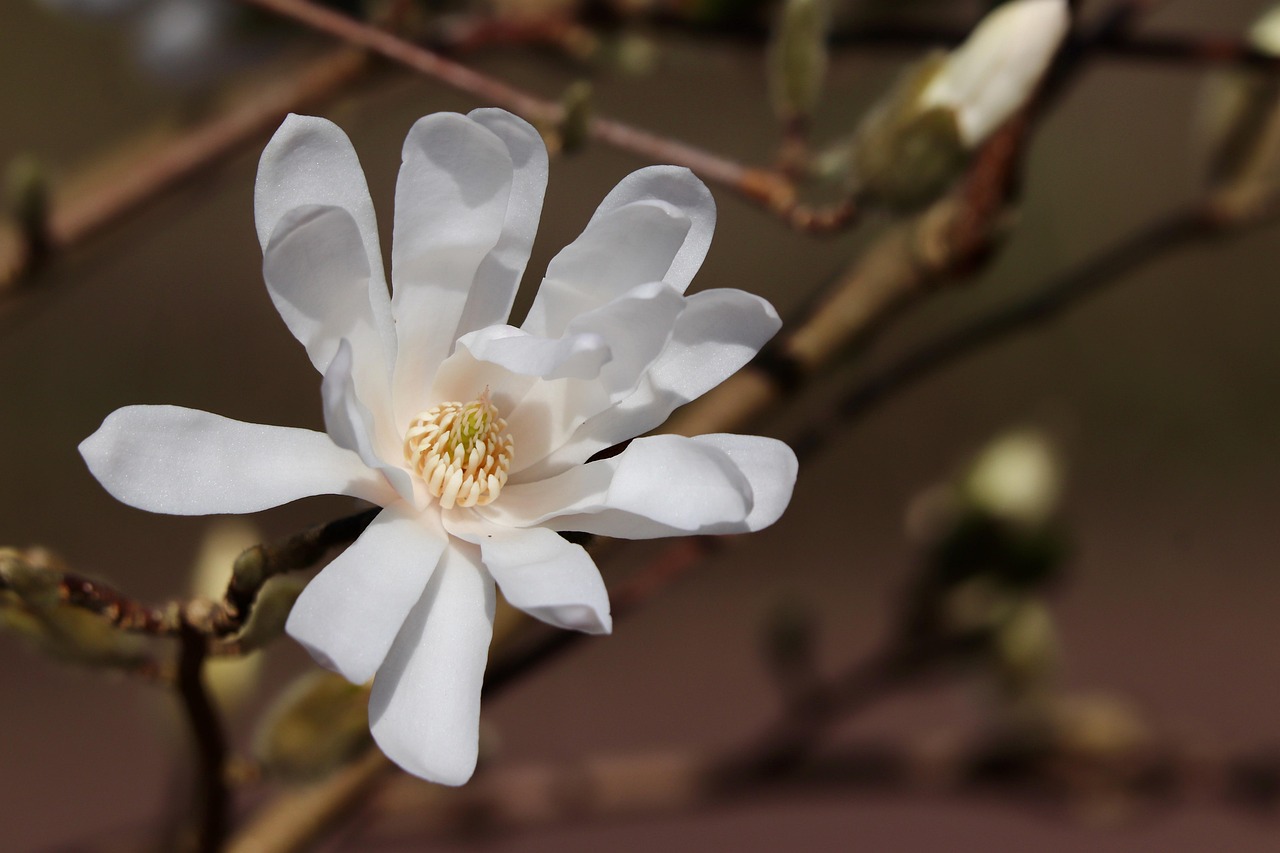The Southern Magnolia tree typically grows at a moderate rate of 1 to 2 feet per year. This growth rate can vary based on factors such as soil quality, water availability, and climate conditions. Healthy trees can reach their full height of 60 to 80 feet within a few decades.
The Southern Magnolia (Magnolia grandiflora) is a beloved tree native to the southeastern United States. Renowned for its large, fragrant white flowers and glossy evergreen leaves, it adds beauty and charm to gardens and landscapes. Understanding the growth rate of the Southern Magnolia is essential for gardeners and landscapers who wish to cultivate this iconic tree effectively.

This tree thrives in USDA hardiness zones 6 through 10, making it suitable for a variety of climates. Its adaptability to different soil types, including clay and sandy soils, contributes to its widespread popularity. However, the growth rate is influenced by multiple environmental factors.
Factors Affecting Growth Rate
Several key factors impact the growth rate of the Southern Magnolia tree. These include:
- Soil Quality: Well-drained, fertile soil promotes faster growth.
- Water Availability: Regular watering, especially during dry spells, is crucial for optimal growth.
- Sunlight: Full sun exposure encourages vigorous growth. However, partial shade can also be tolerated.
- Temperature: Magnolias prefer warm temperatures, which can enhance their growth rates.
By paying attention to these factors, gardeners can create an environment that supports healthy growth and abundant flowering during the summer months.

Ideal Growing Conditions
To ensure the Southern Magnolia flourishes, specific growing conditions should be established. Here are some ideal conditions:
| Condition | Ideal Range |
|---|---|
| Soil pH | 5.0 – 6.5 |
| Sunlight | Full sun to partial shade |
| Watering Frequency | Weekly during dry periods |
| Temperature | 65°F – 90°F |
These conditions help establish a robust root system and promote overall health in the tree. It is essential to provide the right balance of nutrients and moisture to achieve the best results.
Growth Phases of Southern Magnolia
The growth of the Southern Magnolia can be broken down into several phases:

- Establishment Phase: This initial phase lasts for the first few years. During this time, the tree focuses on developing a strong root system.
- Vegetative Growth Phase: After establishing roots, the tree enters a rapid growth phase where it can gain significant height and width.
- Flowering Phase: Typically occurring around 10 years after planting, this phase marks the tree’s ability to produce its stunning blooms.
- Maturity Phase: The Southern Magnolia reaches its full height and continues to flower regularly during this stage.
Understanding these phases helps gardeners manage their expectations regarding growth and flowering. Proper care during each phase is vital for achieving a healthy Southern Magnolia.
Moreover, pruning plays a crucial role in maintaining the shape and health of the tree. Regularly removing dead or damaged branches encourages new growth and improves airflow within the canopy.
The Southern Magnolia not only serves as a beautiful ornamental tree but also provides shade and habitat for various wildlife species. Its striking flowers contribute to summer landscapes, making it a favorite choice among homeowners and landscape designers alike.

Common Pests and Diseases
Like any tree, the Southern Magnolia can be susceptible to various pests and diseases. Understanding these threats is essential for maintaining the health and beauty of the tree. Here are some common pests and diseases that may affect Southern Magnolias:
- Scale Insects: These pests can appear as small, waxy bumps on the leaves and stems. They feed on the sap and can weaken the tree.
- Magnolia Caterpillar: The larvae of this moth can defoliate the tree, causing stress and reducing flowering.
- Leaf Spot: Fungal infections can cause unsightly spots on leaves. While generally not harmful, severe cases may require treatment.
- Root Rot: Overwatering or poor drainage can lead to root rot, which can be fatal if not addressed promptly.
Monitoring the tree regularly for signs of pests or diseases allows for early intervention, ensuring the Southern Magnolia remains healthy and vibrant.
Watering Requirements
Proper watering is crucial for the growth of the Southern Magnolia. This tree has specific needs that can change based on its age and environmental conditions. Here are some watering guidelines:
- Young Trees: Newly planted magnolias require consistent moisture. Water them deeply once a week, especially during dry spells.
- Mature Trees: Once established, Southern Magnolias are more drought-tolerant but still benefit from regular watering during prolonged dry periods.
- Soil Moisture: Always check the soil moisture before watering. The top few inches of soil should be dry, but the roots should not be allowed to sit in water.
Using mulch around the base of the tree can help retain moisture, regulate soil temperature, and reduce competition from weeds. A layer of organic mulch about 2 to 4 inches thick is ideal.
Fertilization Needs
Fertilizing your Southern Magnolia can promote healthy growth and vibrant flowers. However, it is essential to understand the right timing and type of fertilizer to use. Here are some recommendations:
- Timing: Fertilize in early spring before new growth begins and again in late summer if necessary.
- Type of Fertilizer: A balanced fertilizer with equal parts nitrogen, phosphorus, and potassium is recommended. Look for a slow-release formula to provide nutrients over time.
- Application Rate: Follow the instructions on the fertilizer packaging for application rates based on the size and age of your tree.
A soil test can help determine if additional amendments are necessary. Healthy soil will contribute significantly to the overall growth rate and flowering of the Southern Magnolia.
Pruning Techniques for Optimal Growth
Pruning is an essential practice for maintaining the health and appearance of Southern Magnolia trees. Proper pruning techniques can help improve air circulation, enhance sunlight penetration, and encourage new growth. Here are some tips for effective pruning:
- Timing: The best time to prune is during late winter or early spring before new growth begins. Avoid heavy pruning during the active growing season.
- Remove Dead or Diseased Wood: Regularly inspect the tree for dead or damaged branches and prune them back to healthy tissue.
- Shape the Tree: Maintain a balanced shape by selectively removing branches that cross or rub against each other. This helps prevent injury to the bark.
- Avoid Topping: Topping, or cutting back large sections of the tree, can lead to stress and unhealthy growth. Always prune back to a lateral branch.
By following these pruning guidelines, gardeners can promote a healthier Southern Magnolia that grows more vigorously and produces more flowers during the summer months.
The Role of Southern Magnolias in Landscaping
The Southern Magnolia is not only admired for its beauty but also plays an essential role in landscaping. Its large canopy provides shade, making it an excellent choice for residential gardens or public parks. Here are some benefits of incorporating Southern Magnolias into landscaping designs:
- Aesthetic Appeal: The striking flowers and glossy leaves add year-round interest to landscapes.
- Wildlife Habitat: The tree offers food and shelter for various birds and insects, supporting local ecosystems.
- Noise Reduction: The dense foliage can help absorb sound, making it beneficial in urban settings.
Whether planted as a focal point or as part of a mixed landscape design, the Southern Magnolia enhances outdoor spaces while providing numerous ecological benefits.
Seasonal Care for Southern Magnolias
Caring for Southern Magnolias throughout the seasons is crucial to ensure they thrive and produce beautiful summer flowers. Each season brings unique challenges and tasks that gardeners should be aware of to promote healthy growth.
Spring Care
Spring is a vital time for Southern Magnolias as they emerge from dormancy and begin new growth. Here are some key tasks to focus on during this season:
- Fertilization: Applying a balanced fertilizer in early spring supports new growth and flowering. Follow the recommended rates for best results.
- Pruning: This is the ideal time to prune away any dead or damaged branches. Shaping the tree can also be done to encourage a healthy structure.
- Mulching: Adding a fresh layer of organic mulch helps retain moisture and suppress weeds, providing a healthy environment for root growth.
Summer Care
During the summer, Southern Magnolias require consistent care to ensure they remain healthy and vibrant. Here are some essential summer care tips:
- Watering: Ensure the tree receives adequate water, especially during dry spells. Deep watering once a week is beneficial for established trees.
- Pest Monitoring: Regularly check for signs of pests or diseases. Early detection can prevent more significant issues.
- Deadheading Flowers: Removing spent blooms can encourage additional flowering and improve the tree’s overall appearance.
Autumn Care
As autumn approaches, the focus shifts to preparing the Southern Magnolia for winter. Important tasks include:
- Watering: Continue watering until the ground freezes, ensuring the tree is well-hydrated before winter dormancy.
- Leaf Cleanup: Rake fallen leaves to prevent pests and diseases from overwintering in the debris.
- Mulching: Adding extra mulch in late fall can help protect roots from freezing temperatures.
Winter Care
Winter can be harsh on Southern Magnolias, especially in regions with colder climates. Consider these care tips for winter:
- Avoid Heavy Snow Accumulation: Gently shake off heavy snow from branches to prevent breakage.
- Monitor for Frost Damage: Keep an eye out for any frost damage on leaves or buds. If necessary, cover young trees during extreme cold spells.
Choosing the Right Location for Planting
The location where you plant a Southern Magnolia significantly impacts its growth and health. Here are important considerations when selecting a planting site:
- Sunlight: Choose a spot that receives full sun for at least six hours daily, which encourages better flowering and growth.
- Soil Type: Well-drained, loamy soil is ideal for Southern Magnolias. Poor drainage can lead to root rot.
- Space Considerations: Ensure there is enough space for the tree to grow to its full size, which can reach up to 80 feet in height and 40 feet in width.
Selecting the right location will minimize challenges later and allow the Southern Magnolia to flourish in your landscape.
Propagation Methods for Southern Magnolias
Gardeners interested in propagating Southern Magnolias have several methods at their disposal. Each method has its own set of advantages and challenges:
Seed Propagation
Growing Southern Magnolias from seed can be rewarding but requires patience. Here’s how to do it:
- Collect Seeds: Harvest seeds from ripe cones in late summer or early fall.
- Stratification: Soak seeds in water for 24 hours, then store them in a damp medium (like sand) in the refrigerator for about 60 days to simulate winter conditions.
- Sowing: Plant seeds in pots with well-draining soil in early spring. Keep them moist until germination.
Cutting Propagation
This method allows gardeners to create clones of a desired tree. Steps include:
- Select Cuttings: Choose healthy, semi-hardwood cuttings in late spring or early summer.
- Treatment: Dip the cut end into rooting hormone to encourage root development.
- Potted Growth: Plant the cuttings in pots with potting soil and keep them humid until roots develop.
Using these propagation methods, gardeners can expand their Southern Magnolia collection or share this beautiful tree with friends and family.
The Southern Magnolia’s majestic presence, combined with its fragrant flowers, makes it a treasured addition to any landscape. With proper care and attention, these trees can provide beauty and shade for generations to come.
Maintaining the Health of Southern Magnolias
To ensure the long-term health and beauty of Southern Magnolias, ongoing maintenance is essential. Regular inspections and care practices will help prevent problems and promote vibrant growth. Here are additional maintenance tips to consider:
- Soil Testing: Conduct soil tests every few years to check pH levels and nutrient content. Adjusting soil conditions accordingly can lead to healthier growth.
- Insect Control: If pests are detected, consider using organic insecticides or introduce beneficial insects, such as ladybugs, which can help control harmful populations.
- Fungal Treatments: For fungal infections, applying a suitable fungicide can help manage issues like leaf spot or powdery mildew. Always follow label instructions for application.
- Environmental Factors: Keep an eye on environmental changes that may affect your tree, such as nearby construction or changes in drainage patterns. Adjust care practices as necessary.
By remaining vigilant and proactive in tree care, gardeners can foster a thriving Southern Magnolia that continues to grace their landscape with beauty and fragrance.
The Cultural Significance of Southern Magnolias
The Southern Magnolia holds cultural significance beyond its aesthetic appeal. This tree is a symbol of the American South, representing resilience and beauty. Historically, it has been featured in literature, art, and architecture, further solidifying its place in cultural heritage. Some notable aspects include:
- Historical Symbolism: Southern Magnolias are often associated with Southern gentility and hospitality. They are used in many ceremonies and celebrations, reflecting tradition and grace.
- Art and Literature: The tree appears in works of Southern authors and artists, symbolizing the connection between nature and human experience.
- State Tree: The Southern Magnolia is the state tree of Mississippi, showcasing its importance to regional identity.
Understanding the cultural context of the Southern Magnolia can enhance appreciation for this magnificent tree and its role in the landscape.
Common Misconceptions about Southern Magnolias
Despite their popularity, there are several misconceptions about Southern Magnolias that gardeners should be aware of:
- Not Drought-Tolerant: While established trees can survive dry spells, they still require regular watering during prolonged droughts for optimal health.
- Slow Growers Only: Though they have a moderate growth rate, with ideal conditions, Southern Magnolias can grow significantly faster than many assume.
- Only for Large Spaces: While they do grow large, smaller cultivars exist that are suitable for smaller gardens and urban settings.
By dispelling these myths, potential growers can make informed decisions about planting and caring for Southern Magnolias.
Final Thoughts
The Southern Magnolia is truly a remarkable tree, known for its striking appearance and fragrant blooms. With a growth rate that allows it to flourish over time, this tree offers numerous benefits, including shade, beauty, and ecological support. By understanding the factors that influence its growth, such as soil conditions, watering practices, and seasonal care, gardeners can cultivate healthy trees that thrive in their landscapes.
Caring for Southern Magnolias requires dedication but is rewarded with spectacular flowers and lush foliage. By utilizing proper pruning techniques, pest management strategies, and seasonal care guidelines, owners can ensure their magnolias remain vibrant year after year. The Southern Magnolia not only enhances the aesthetic appeal of outdoor spaces but also carries cultural significance that connects people with their heritage.
Ultimately, whether you are looking to plant a majestic Southern Magnolia in your yard or simply appreciate its beauty in public spaces, this tree adds elegance and charm to any environment. Embrace the opportunity to cultivate this iconic species and enjoy the myriad of benefits it brings to your landscape.
